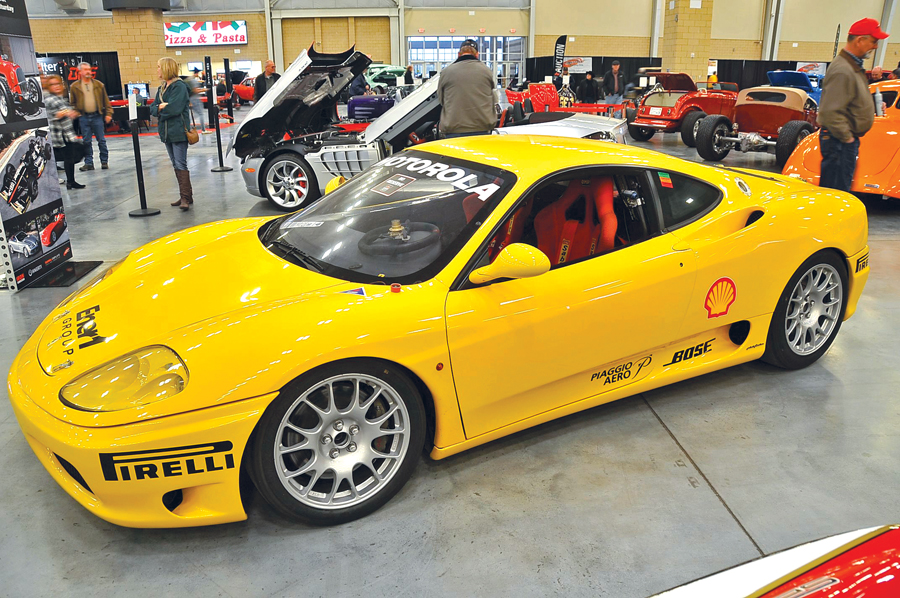
A Ferrari press release from the 1999 International Geneva Motor Show noted: “Following a year of record sales performance, Ferrari comes to Geneva to launch the all-new Ferrari 360 Modena. In the past six years, Ferrari SpA has completely changed its model lineup, producing no less than 12 new models or variants in that time, restructured its entire International sales network and created a revised and highly competitive Ferrari F1 Grand Prix team.”
The previous few years had seen the introduction of the 550 Maranello, the 456 GT, the F50, and the F355 series. The dealer network was forced to upgrade their facilities, and new international markets were opened. The payoff: Production was up to an impressive 3,637 cars and Ferrari was making money.
State of the art 20 years ago
The 360 had big shoes to fill and hit the mark. The 360 was not just an F355 upgrade, it was a scratch design that incorporated input from a network of technical partners, as well as Ferrari’s racing department.
Getting 400 horsepower from a 3.6-liter V8 was world-class territory in 1999. Getting there took two control units optimizing the fuel injection and ignition systems in combination with state-of-the-art variable cam timing, two rows of throttle valves and variable intake manifolds.
Ferrari was convinced the paddle-shift F1 transmission was the future. Getting to 60 mph in 4.5 seconds or faster required a quicker shift than a mortal can achieve. Upgrades to the F355’s F1 unit improved shift times to the point where the 360 version was pleasant to use.
Room for golf clubs wasn’t on the top of a 360 buyer’s wish list, but Ferrari’s goal of having a large cabin in the 360 Modena made carrying golf clubs possible.
Adding size also added weight, and Alcoa Aluminum, in the United States, was sourced for weight-saving ideas. Alcoa’s aluminum frame and body design met Ferrari’s weight goals at a price that was within budget.
There are two main 360 models: the 360 Modena coupe, and the open-top 360 Spider. A brood of variants was produced, including a rare sunroof-equipped Modena, several competition versions, and the hot-rod Challenge Stradale.
Avoiding financial punishment
There is no substitute for a pre-purchase inspection of any Ferrari you are considering. The 360 is no exception. Nothing is inexpensive about a 360, and you don’t want to leave anything to chance.
Plastic interior parts were coated with a rubberized coating. The coating melts and becomes sticky. The goo needs to be removed or it gets on everything. This is a $3,000-plus project.
The dreaded Ferrari timing-belt service is done through a hole in the bulkhead, which reduced the cost over earlier V8 models. Ferrari recommends doing the $3,000 job every three years.
There’s no weak spot in the 360’s driveline, but when failures occur, they’re expensive. A pre-purchase inspection is your best protection from a disaster.
The 360s were built as Ferrari expanded their options program. Ninety percent of the 360s had F1 transmissions. Finding a 6-speed car will be difficult. Most cars have shields and colored calipers.
Daytona seats are a must in my book. Carbon-ceramic brakes cost a fortune when new — but add little to a used car’s value. The list goes on and on.
Is this car really affordable?
$80,000 may not be your idea of affordable, but that price is cheap in Ferrari World.
Entry-level Ferraris start at about $40,000, and that often buys more ills than thrills. Careful shopping should find you an acceptable Modena in the $60,000 range. Spiders aren’t much more but come with added complexity and potential expense.
If you want a 6-speed 360, be prepared to spend more. You will not find a deal on one, so get over it.
A Challenge Stradale is the holy grail of 360s, and the price for that grace easily doubles a standard Modena.
There’s nothing like driving a Ferrari. If a 360 fits in your budget, it’s time to buy one. ♦